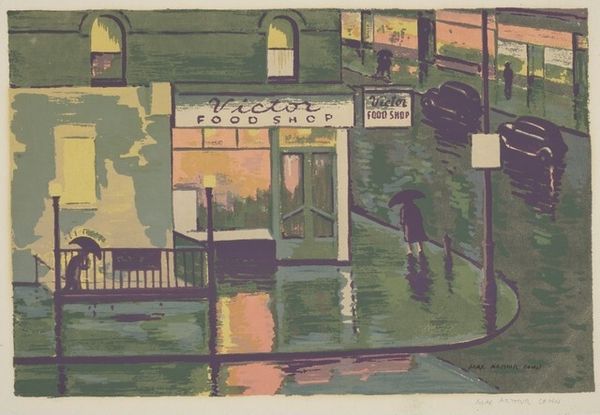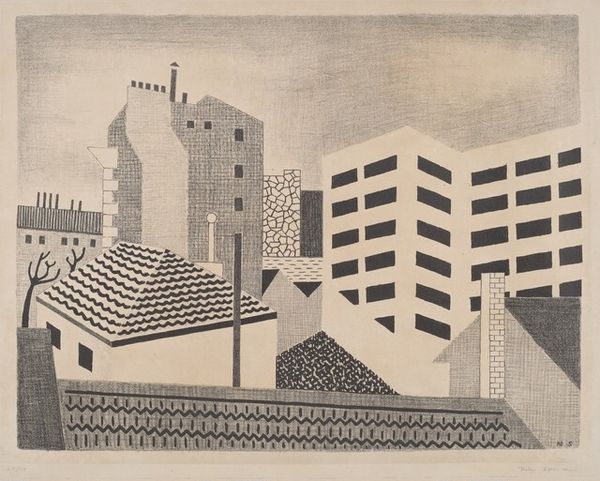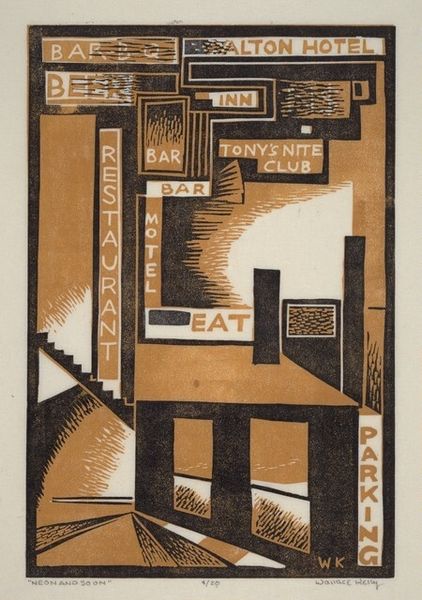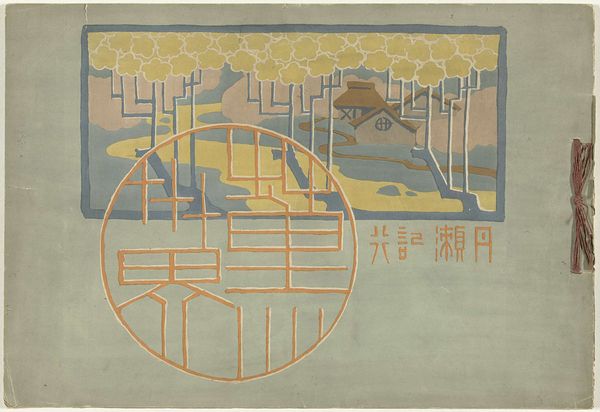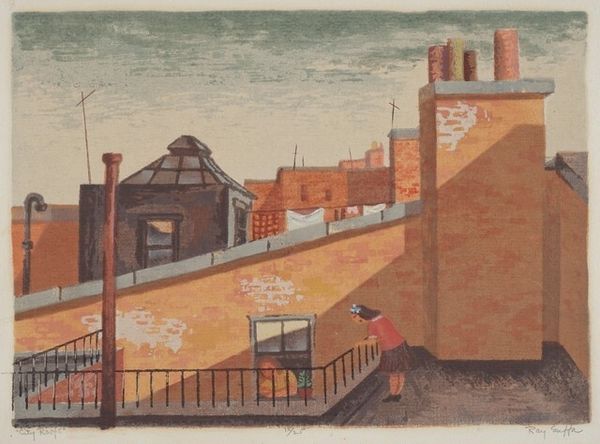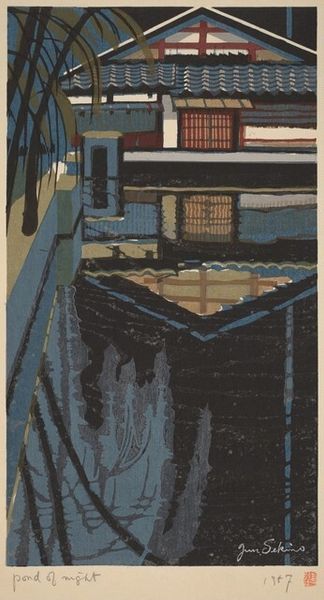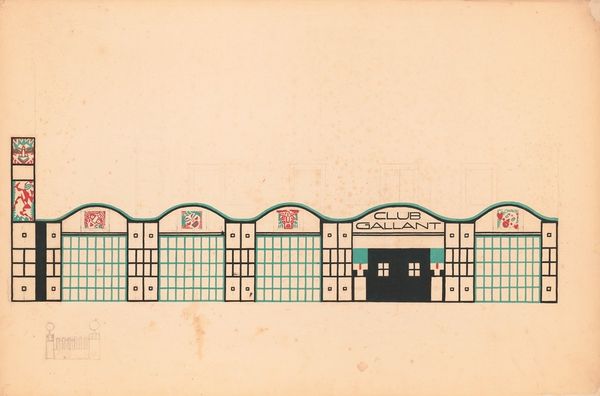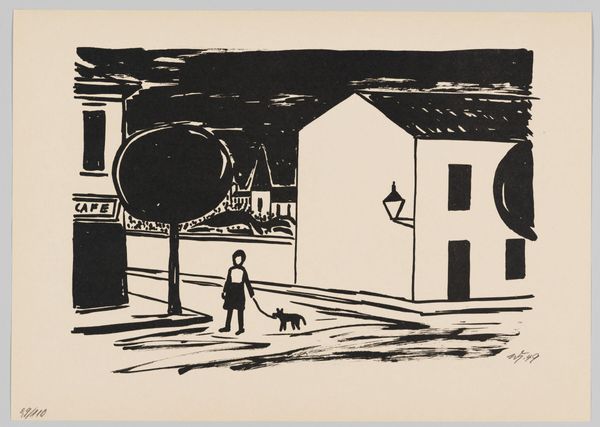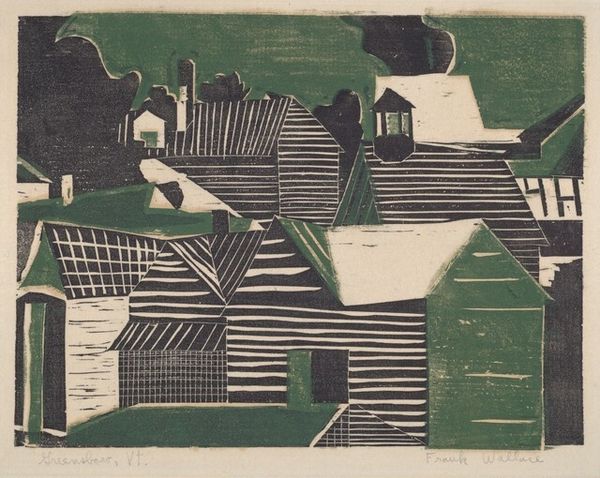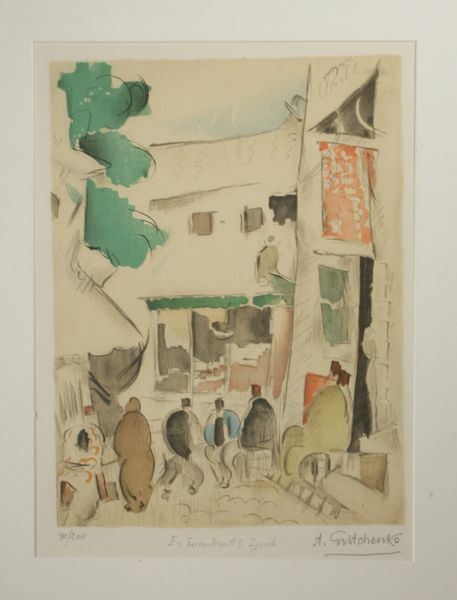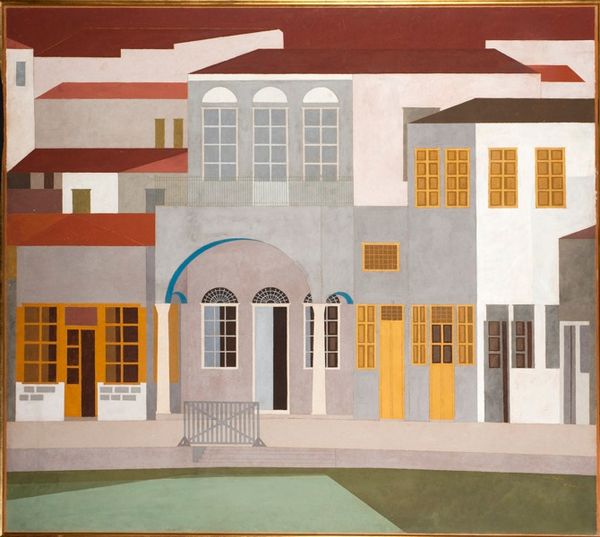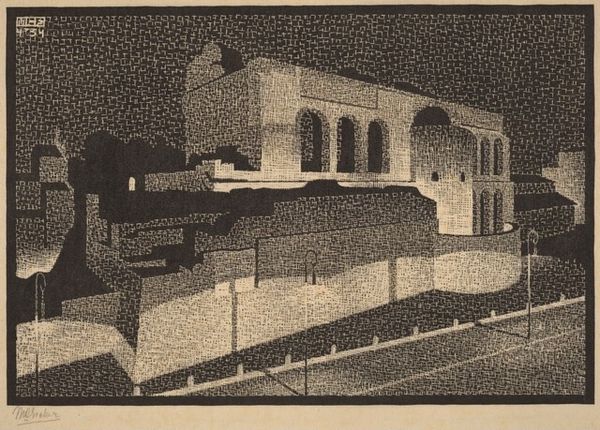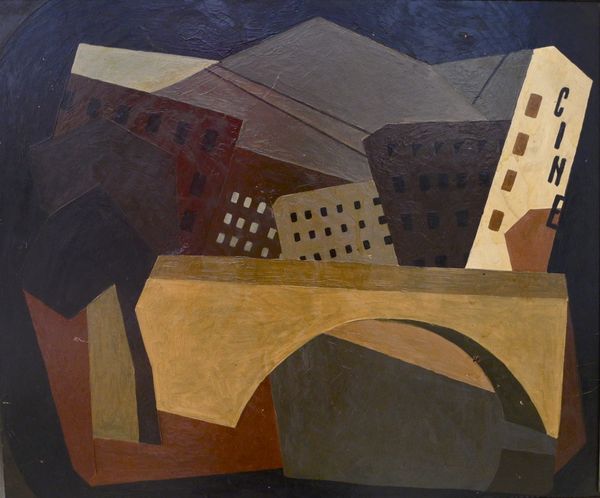
# print
#
geometric
#
cityscape
#
modernism
Dimensions: image: 225 x 300 mm sheet: 337 x 432 mm
Copyright: National Gallery of Art: CC0 1.0
Editor: We're looking at Morris Blackburn's "Street Scene II," a print made sometime between 1953 and 1954. It’s got this interesting flattened perspective, and I’m drawn to the way he uses these simplified geometric forms to suggest buildings and urban life. How do you interpret this work? Curator: It’s interesting to consider this piece in the context of post-war urban development. Blackburn is working at a time when cities were undergoing massive reconstruction and experiencing shifts in demographics. The abstracted forms, rather than offering a specific sense of place, seem to present a kind of generalized urban experience, stripped of local specificity. What does that stripping away do for you? Editor: I hadn't thought about that. It's true, it could be almost any city. So, by decontextualizing the scene, he’s almost commenting on the universal experience of modern urban life, and maybe even the kind of anonymity it breeds? Curator: Exactly. And the print medium itself contributes to this feeling. Think about the role of printmaking in making art accessible and reproducible. Blackburn's choice of medium invites wider engagement, asking viewers to consider their relationship to their changing urban environment and perhaps its impact on shared or public life. How might social shifts relate to abstract forms in art? Editor: That's a fascinating connection. I suppose these stark geometric shapes reflect the simplification and mass production happening at that time too. Something about the almost diagrammatic shapes makes me think of planned communities and a loss of individualism. Curator: Yes! He provides visual vocabulary reflective of wider socio-cultural and economic transformations. Blackburn seems acutely aware of how these forces shaped the built environment and individual identity. This really opens my eyes to how to view an artwork not as a discrete image but one enmeshed in complex layers of human action. Editor: Definitely. I see now there's much more to cityscapes than simply documenting architecture!
Comments
No comments
Be the first to comment and join the conversation on the ultimate creative platform.
